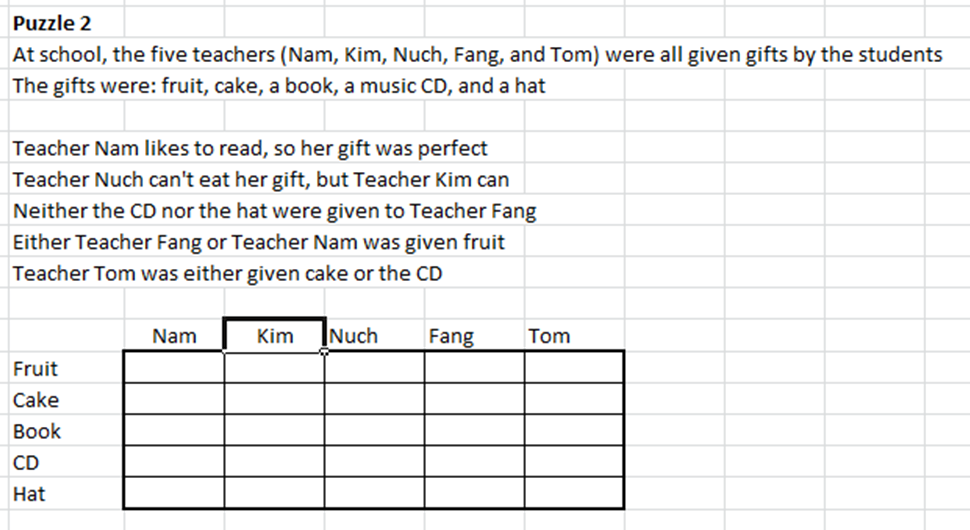


You can click the link for more details on each section, but I've included all the clues for my Library Logic Grid Puzzle below, along with what type of question it is. For instance, in the tutorial they cover the different types of clues: true/false, multi-elimination, neither/nor, either/or, greater/lesser than, and unaligned pairs. Even though this is technically meant for solving puzzles, it can really inform the puzzle creation process as well. The one I like to use is Puzzle Baron's How To Solve a Logic Puzzle. Thankfully, there are resources online to help you navigate this part of the process. The last stage-and definitely the most difficult, in my opinion-is creating the clues that will help others solve your puzzle. Again, this might be easier to do on a computer or with a pre-made grid whatever works for you is just fine! It's okay if you mess up a few times when practicing at first-I had to test three different versions of my grid, reordering slightly with each version (I ended up cheating a bit in the end, and included the The in two of the book titles so the answers didn't line up too perfectly). The image quality is high enough that you shouldn't have a problem with a printed version! If you want to create your own editable grid, I would recommend Microsoft Excel or Google Sheets (I used Google Sheets) the flexibility to create as many categories and entries as you need is really great compared to finding one online and filling it in via Photoshop or another program (or by hand).) (Just right click on the template, choose "Open Image In New Tab"/"View Image"/etc., and print your logic puzzle from there. This is so people solving the puzzle can see the overlap of all the categories, rather than trying to keep it all straight in their head.Īs you can see below, I also drew by hand a rough sketch of the grid I know that that isn't for everyone, though, and so I've also included a template for a 4x4 grid, which you can print and fill in yourself! For instance, the categories along the top go "People (Students), Book Title, Genre," while the categories down the side go "Due Date, Genre, Book Title." As you might have noticed, two of the categories repeat (book title and genre) while two don't (students, due date).

You'll want to pay attention when laying out your grid: the same category can't overlap on itself, so you'll have to reverse the order of the categories along one axis. For my grids, I usually write all the entries in alphabetical order within each category. Having a table with your answers can be the easiest way to keep everything straight as you start to create your grid and write your clues. Once I had all of my entries filled in, I drew a little chart with the category titles on the top row, and decided how everything lined up (that's what the checkmarks are for in the above right photo).


 0 kommentar(er)
0 kommentar(er)
